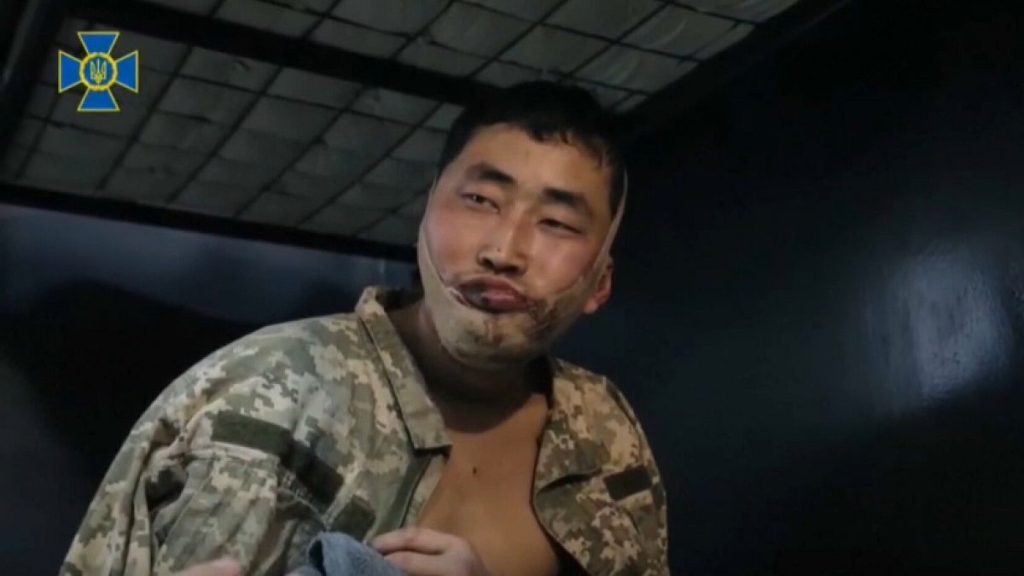The geopolitical landscape has taken another intriguing turn with the capture of two North Korean soldiers by Ukrainian forces within Russian territory. This unexpected development, confirmed by the Security Service of Ukraine (SSU), has raised a multitude of questions regarding North Korea’s involvement in the ongoing Russia-Ukraine conflict, the treatment of prisoners of war, and the potential for diplomatic maneuvering. The capture occurred in Russia’s Kursk region, a significant detail highlighting the complexities of the war’s geographic reach and the interplay of international actors.
Ukrainian President Volodymyr Zelenskyy has publicly addressed the situation, offering to return the captured soldiers to North Korea in exchange for Ukrainian prisoners of war currently held by Russia. This proposition introduces a new layer of intricacy to the already complex prisoner exchange dynamics of the conflict. Zelenskyy’s statement also acknowledged the possibility of more North Korean POWs, suggesting that these two soldiers may not be isolated cases, and hinting at a larger, perhaps undisclosed, North Korean presence within the Russian military ranks. This offer leverages the captured soldiers as potential bargaining chips, aiming to secure the release of Ukrainian soldiers while simultaneously placing pressure on North Korea and Russia to acknowledge the presence of North Korean troops in the war zone.
The captured soldiers are currently undergoing interrogation in Kyiv, assisted by Korean translators, according to the SSU. One soldier reportedly expressed a desire to return to North Korea, while the other indicated a preference to remain in Ukraine. This divergence in their wishes underscores the individual complexities within this situation, highlighting the potential for varied motivations and experiences among the North Korean soldiers deployed in the conflict. Zelenskyy has alluded to “other options” for those who do not wish to return, suggesting potential pathways for asylum or other forms of protection, a prospect that could further complicate relations between Ukraine and North Korea.
The SSU has released details regarding the capture and subsequent handling of the two soldiers. One soldier was found in possession of a Russian military ID card bearing the name of another individual registered in the Republic of Tuva, a Russian republic bordering Mongolia. This detail raises suspicions about the administrative practices surrounding the deployment of North Korean troops and the potential use of false identities, potentially to obscure the extent of North Korea’s involvement in the conflict. The SSU’s emphasis on adherence to international law in the treatment of the captured soldiers seeks to position Ukraine as upholding humanitarian principles, even amidst the complexities of war and international tensions.
While Ukraine asserts this capture as “indisputable evidence” of North Korean involvement in the conflict, Pyongyang has remained silent, neither confirming nor denying the presence of its troops in Russia. This silence is consistent with North Korea’s previous stance on the issue, maintaining a level of ambiguity despite reports and allegations from other sources. This silence, however, does not negate the accumulating evidence, including reports from Ukrainian military officials and Western intelligence agencies, suggesting a substantial North Korean troop presence within the Russian military effort. The lack of official acknowledgment from Pyongyang allows North Korea to retain a degree of plausible deniability, while simultaneously providing a layer of secrecy around the exact nature and extent of its involvement in the ongoing conflict.
The capture of these two North Korean soldiers adds another dimension to the ongoing conflict. It brings to light the intricate web of international alliances and the obscured roles of various actors in the war. The incident also underscores the human cost of conflict, highlighting the plight of individuals caught in the crossfire of geopolitical maneuvering. The soldiers’ capture, the ensuing diplomatic dance, and North Korea’s continued silence all contribute to a murky and evolving situation, the ramifications of which continue to unfold. Estimates of North Korean casualties from Ukrainian and South Korean sources further corroborate the involvement of North Korean soldiers, even as their government remains officially silent. These estimates, combined with reports of orders to commit suicide rather than be captured, paint a grim picture of the conditions faced by these troops, caught between a secretive regime and a brutal conflict.

